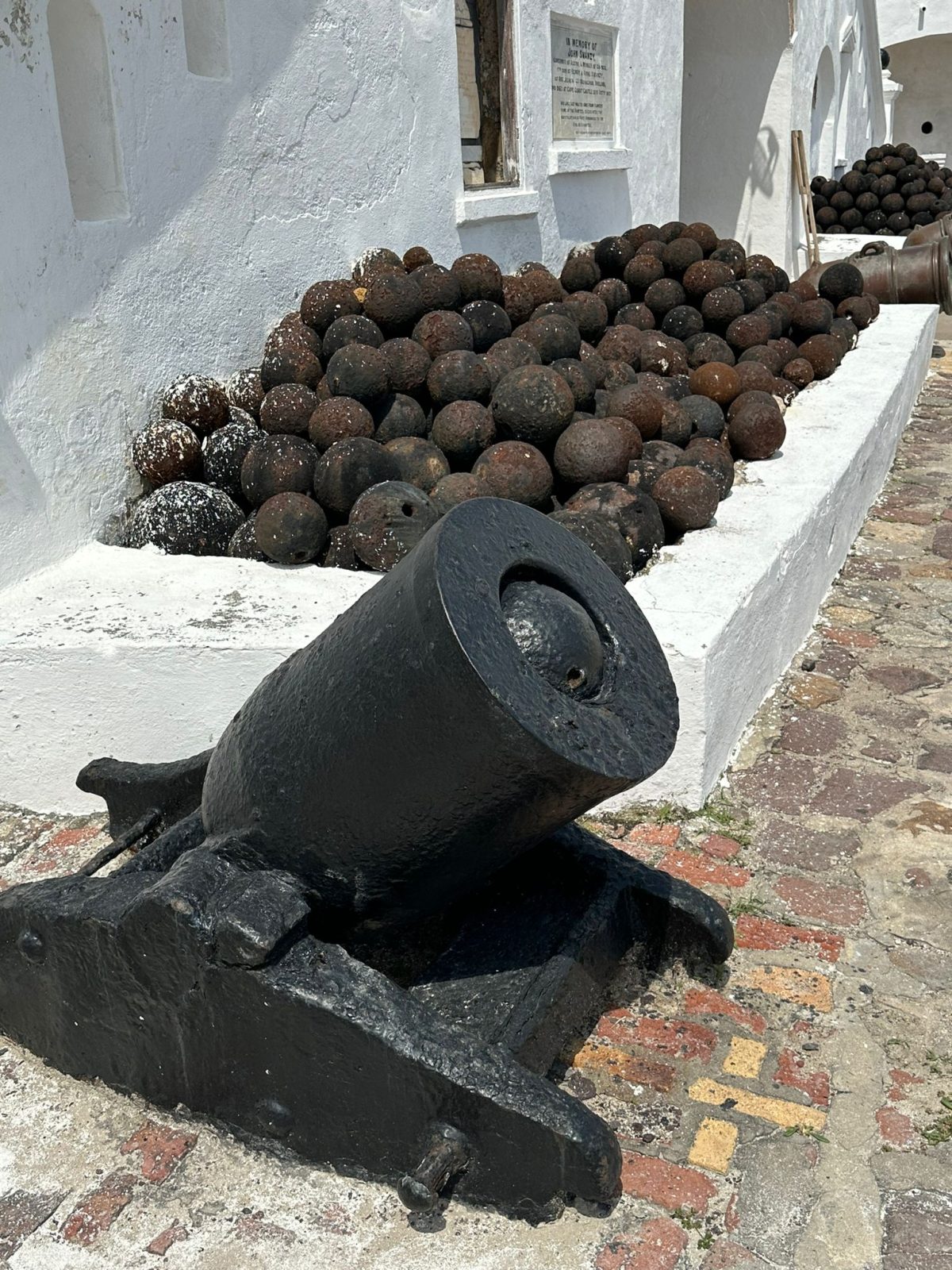Shaped by history, it obligates us to eradicate it

The International Day for the Abolition of Slavery on 2 December commemorates the millions of victims of slavery. A recent visit to the Cape Coast Castle in Ghana shows that freedom remains a mission: yesterday, today, and tomorrow.
History comes to life on the Gold Coast of West Africa, a history of unbelievable suffering and systematic dehumanisation. The fort, once the centre of the transatlantic slave trade, is a reminder that human freedom is not a given.
A door of no return
Last week, during the District Apostle Meeting in Accra in Ghana, the Chief Apostle visited the UNESCO World Heritage Site Cape Coast Castle with the District Apostles and some Apostles. The fort, a place of deep historical suffering, is a reminder of the deportation and dehumanisation of millions of Africans. During the guided tour through the narrow dungeons, in which the slaves were kept for months in inhuman conditions waiting for the next slaving ship, the cruelty of this era became palpable. The “door of no return” in particular, through which countless people were led out of the fort to the harbour and from there shipped off to a life of exploitation, left a lasting impression. In the sixteenth century, it is estimated that around twelve million people were sold from Africa to South, Central, and North America. This fort vividly confronts visitors with the horrors and systematic violation of human dignity that are rooted in the past, but whose effects continue to impact modern life.

Freedom as a mission for today
What one sees at Cape Coast Castle not only serves as a stark reminder of the historical tragedy, but also challenges visitors to confront modern forms of slavery. Unfortunately, slavery is far from being a thing of the past. On the contrary, according to the latest estimates, the number of victims of modern slavery has risen to a total 50 million people worldwide in recent years. This increase particularly affects women and children, who are the most vulnerable and at high risk of being subjected to modern forms of slavery such as forced labour, domestic servitude, and debt bondage. Wars and economic crises favour modern slavery, as the United Nations (UNRIC) points out. However, this problem is not unique to developing countries. Numerous forms of hidden exploitation continue to persist in Western societies. The reasons for this include the high demand for products and services that are as cheap as possible, as well as the difficulty of tracing global supply chains, and the lack of awareness in society.
Observance raises awareness
On 2 December, the International Day for the Abolition of Slavery commemorates the ongoing global challenge of modern slavery. Since the adoption of the UN Convention for the Suppression of the Traffic in Persons and of the Exploitation of the Prostitution of Others (1949), this day has stood for the fight against forced labour, human trafficking, child labour, and other forms of modern exploitation. Often these scourges are invisible in supply chains, households, or farms. The day calls on governments, companies, and every individual to take responsibility: by protecting those affected, strengthening labour rights, and raising awareness of fair production conditions. Freedom is a human right that everyone can claim—yesterday, today, and tomorrow.






Foto: Thomas Deubel




